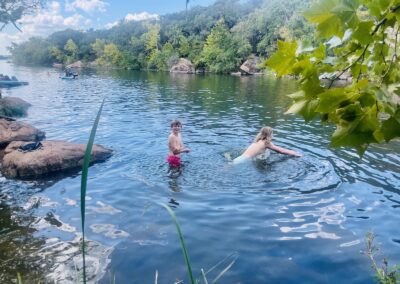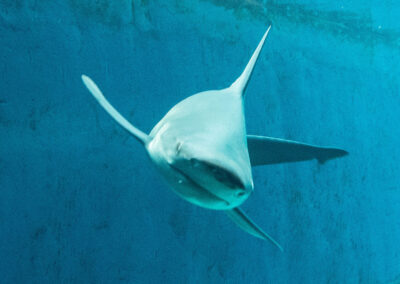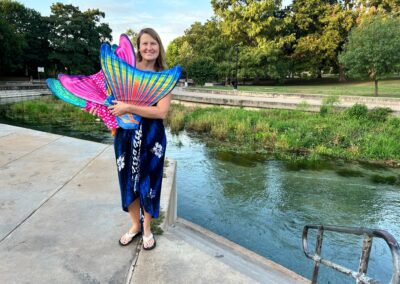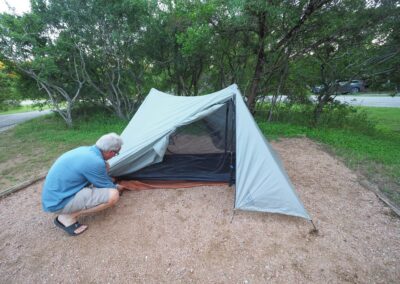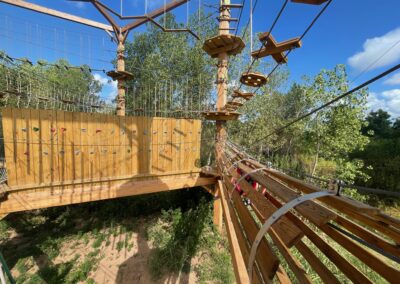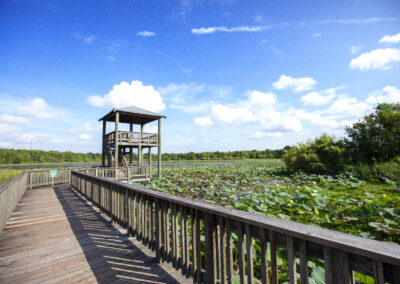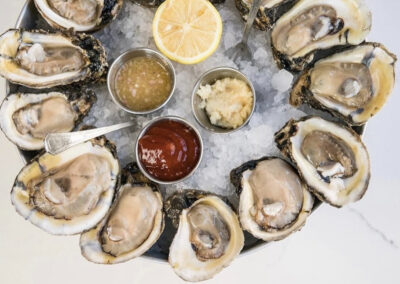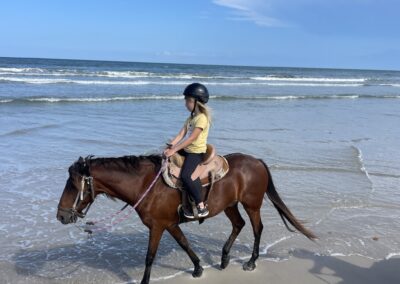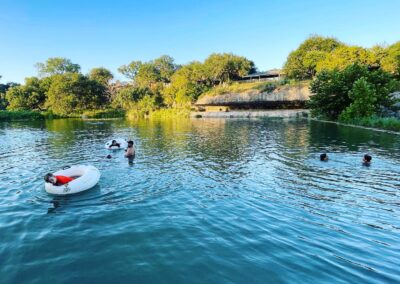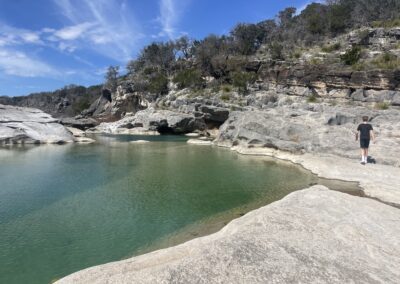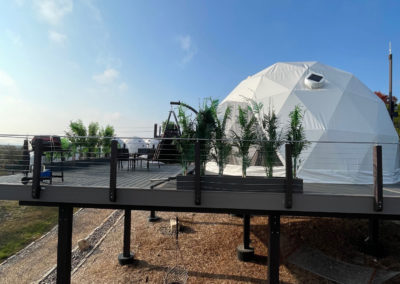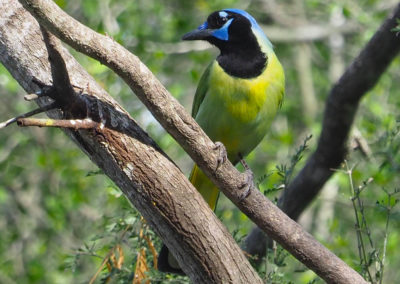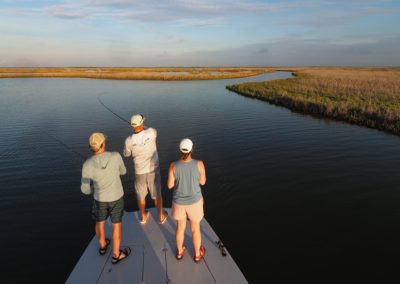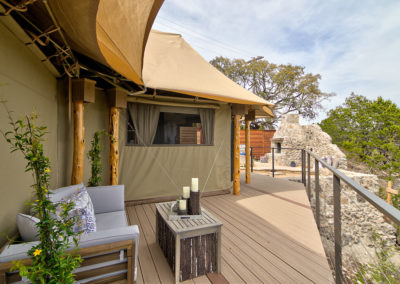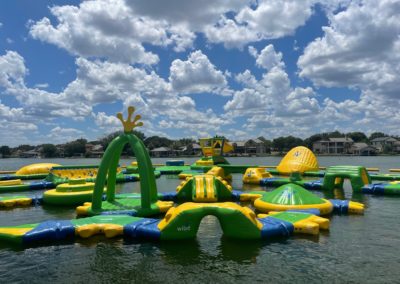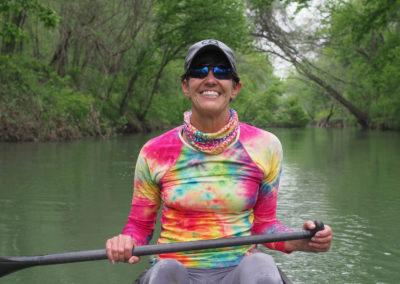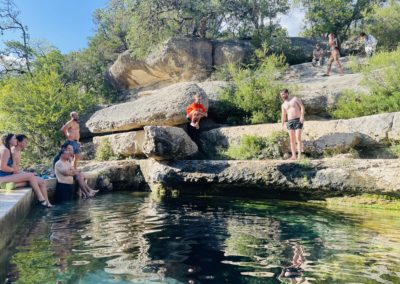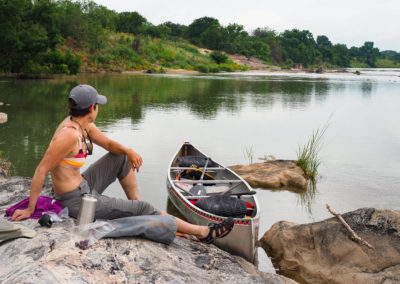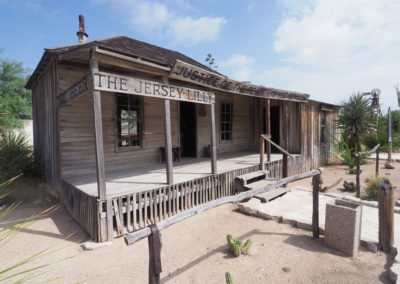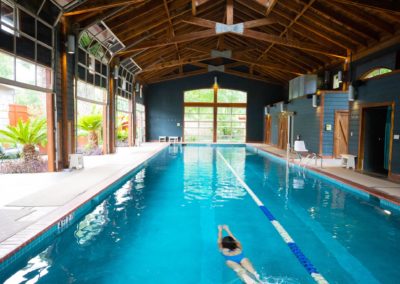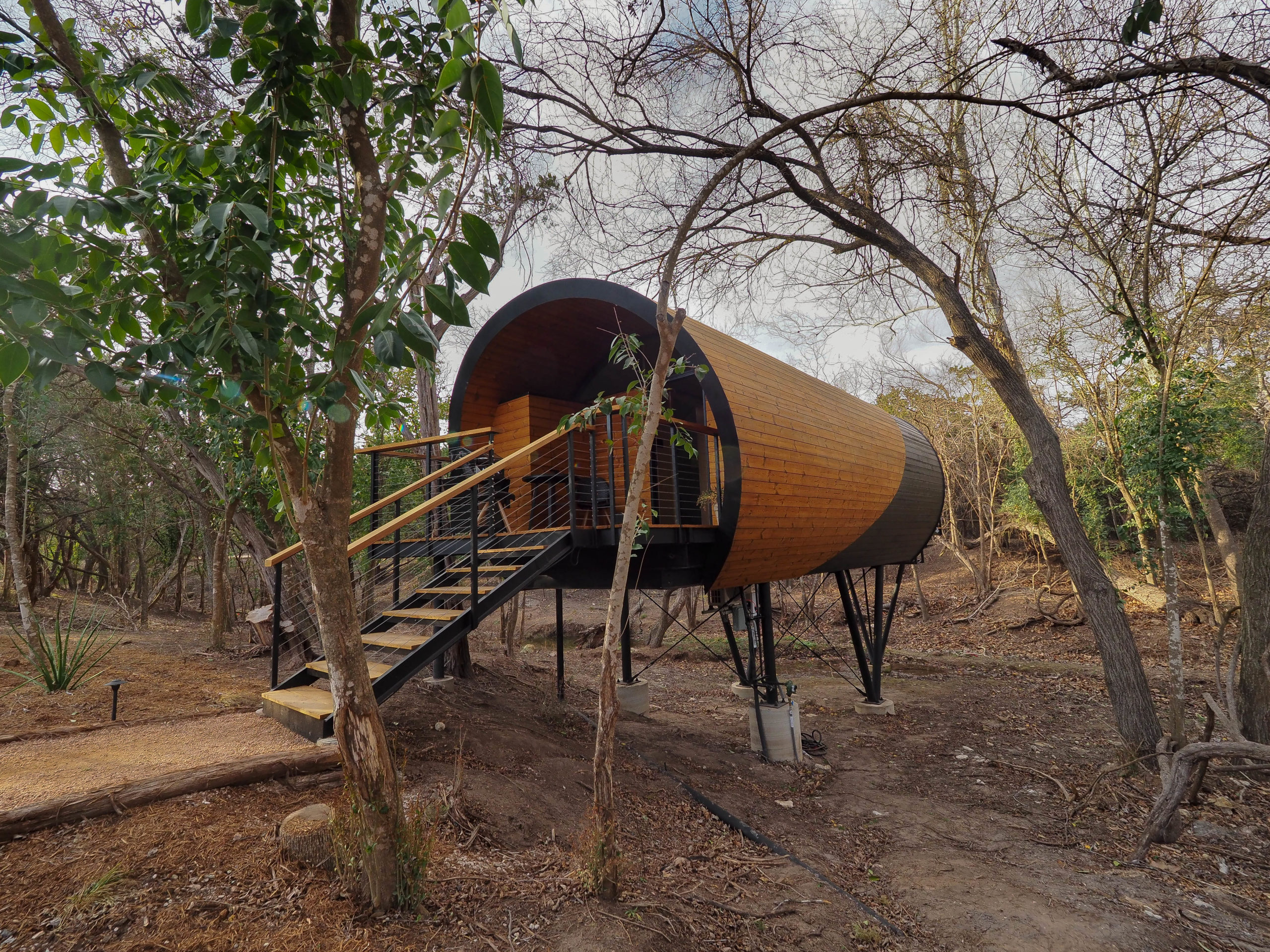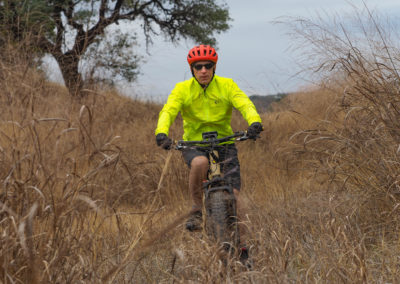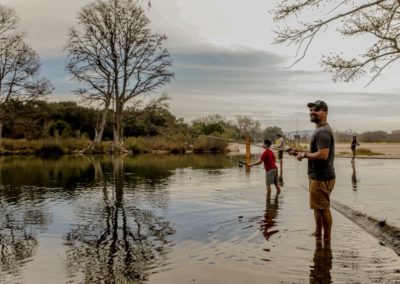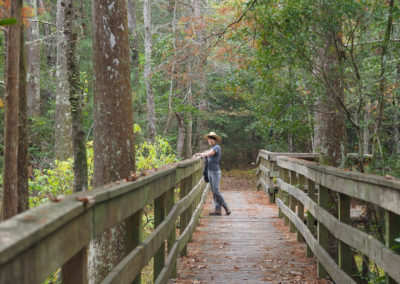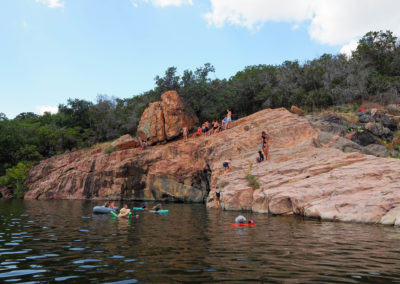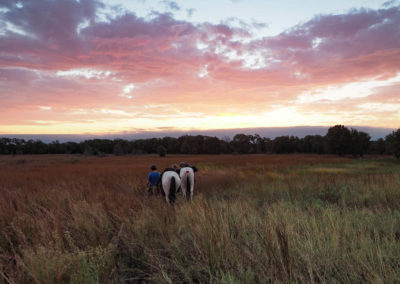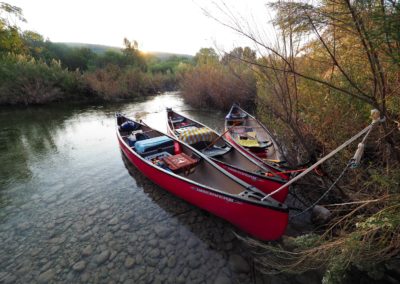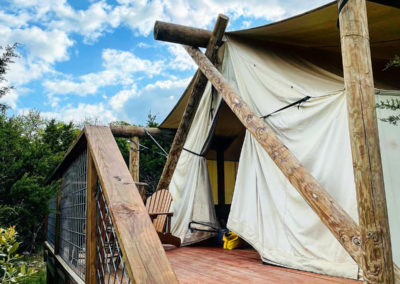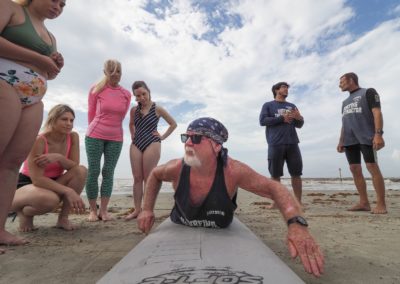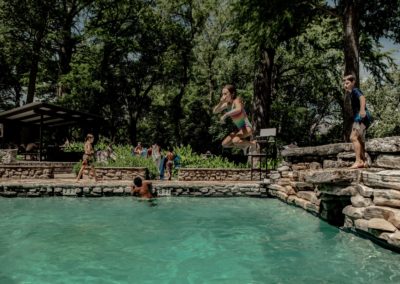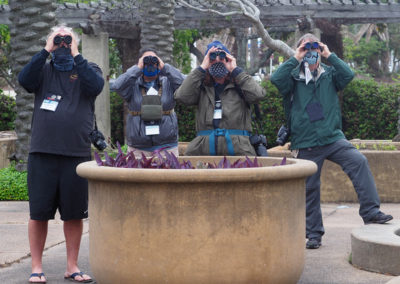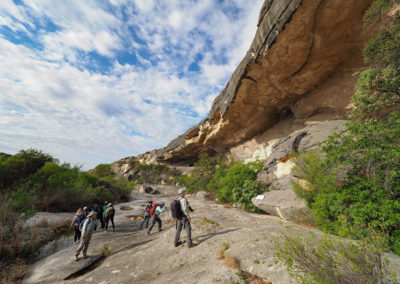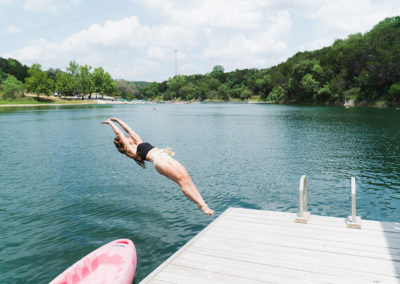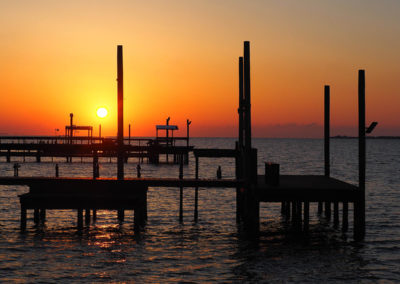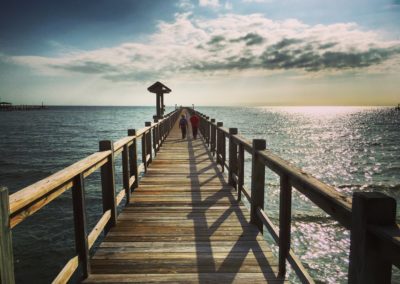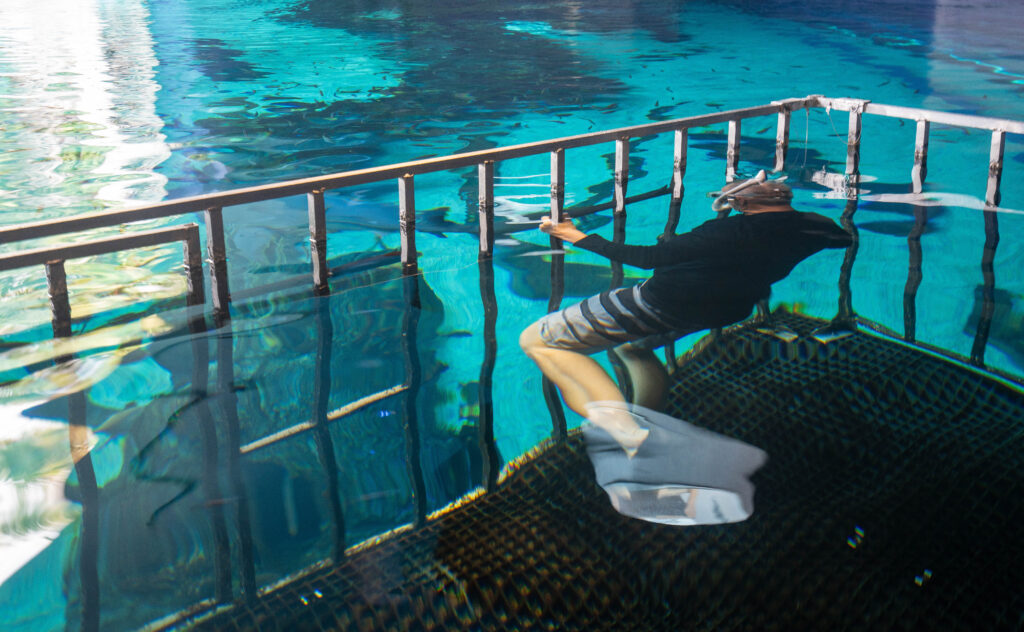
Chris LeBlanc looks at sharks inside an exhibit at the Texas State Aquarium in Corpus Christi. Pam LeBlanc photo
A few years ago, while scuba diving in the Galapagos Islands, I set a reef hook along a rocky underwater ledge and hung on as more than 200 hammerhead sharks schooled overhead.
The image still sticks with me: The swaying motion of the sharks, the conga line they formed above me, the thrill of seeing that many “men in gray suits” at once––, in the wild.
I didn’t get quite the same feeling when I bobbed inside a metal cage in the corner of a 450,000-gallon Caribbean Sea exhibit tank at the Texas State Aquarium, but I did get to admire half a dozen sand sharks at close range.
You can too.
Basics about the snorkeling experience at the Texas State Aquarium
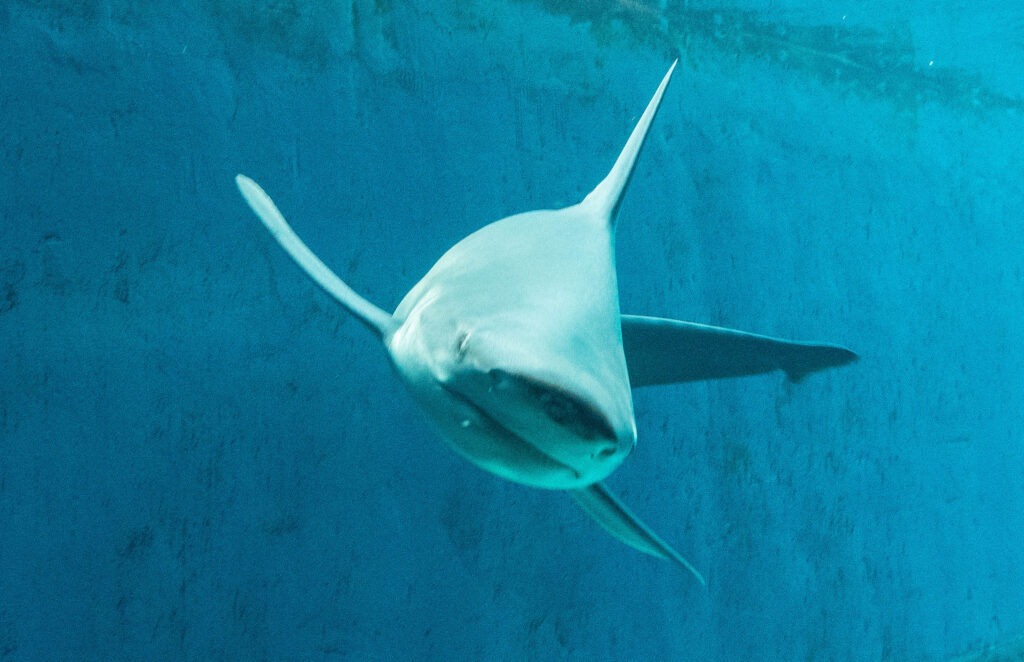
A sandbar shark makes a close pass at the Texas State Aquarium. Chris LeBlanc photo
Things to know? The in-water part of the snorkeling with sharks experience lasts about 20 minutes, which is plenty of time in the chilly, 70-degree water. Participants stay behind metal bars, out of shark nibbling range. Two stingrays and a pair of moray eels bigger than foam pool noodles live in the exhibit, also, but except for a few finger-sized fish, everything stayed outside the cage during my dip.
If you’re a seasoned scuba diver, you’ve probably seen plenty of sharks in the wild. Blacktips and reef sharks are common in the Caribbean, and hammerheads, white tips, tiger sharks and other species periodically make appearances. This experience won’t match up to that, by a long shot.
But if you’ve never gone scuba diving and wonder what it’s like to see a 5-foot shark (or six), up close, in the water, this is a good introduction. Plus, kids as young as 8 can participate.
Just brace for the cold.
We booked our experience for 3:15 p.m. on a weekday. A few members of the aquarium’s dive team escorted us back to the exhibit. They gave us rash guards and steered us to a changing room. We brought our own masks and snorkels, but they can provide those too. Participants are asked to wear modest swimwear.
Read more: Seven family-friendly summertime musts in the Gulf Coast capital
We showered off, then headed to the water. The cage is located in one corner of the aquarium’s largest exhibit. Bear in mind that aquarium visitors peering into the tank from dry land can catch a glimpse of you from afar.
Getting to know the sharks at the Texas State Aquarium
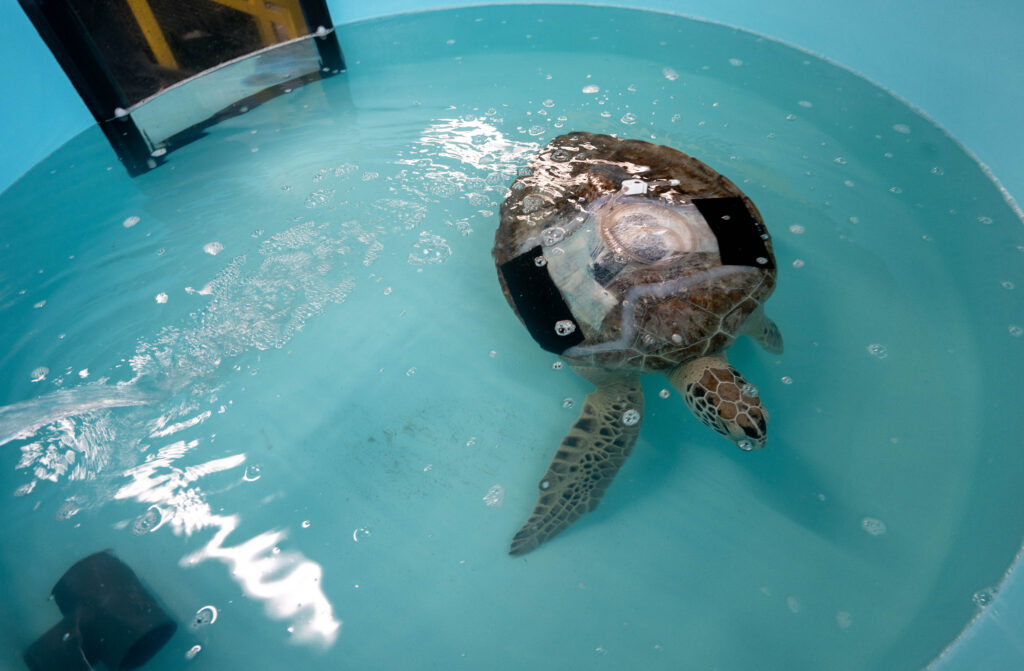
A wildlife rehabilitation center at the Texas State Aquarium helps stranded sea turtles. Pam LeBlanc photo
Before getting into the water, we learned a little about the six resident sandbar sharks – five female and a single male –– living in the exhibit. Each has a distinct personality, according to dive officer Shelby Miskell.
The male, Duke, is easy to spot by the claspers on his underside. The others can be identified by subtle markings on their bellies or the slant of their fins.
Nola, a female, is at the top of the pecking order. As the alpha member of the crew, she usually swims at the top of the water column. From above, it’s easy to spot her dorsal fin cutting the surface of the water. The other sharks swim beneath her, circling over the artificial wreckage of a ship inside the 20-foot-deep tank.
Full-grown sandbar sharks weigh about 140 pounds. They’re not really interested in humans for supper; they prefer smaller prey, and at the aquarium they eat capelin, squid, and herring. They’re listed as a vulnerable species in the wild and prized by some for their fins. (It’s illegal to fish them in Texas.)
Taking the plunge at the Texas State Aquarium
At the appointed time, we don our masks and snorkels and wade into the tank. It’s cold – 70 or 71 degrees, about the temperature of Barton Springs. I wish I’d brought a wetsuit. I ease my way into a corner of the 6-foot cage, then submerge my face. Lots of little silvery fish swirl around. Every now and then, one of the sharks makes a drive by.
It’s not so much scary as beautiful. The animals are sleek and torpedo like, but not really intimidating.
If you feel nervous around them, just maintain eye contact with them, Miskell says. That’s easier said than done, but if you manage, the shark will generally back off. “You’re showing the shark you are the predator,” she says.
The tank we’re in was built to accommodate programs like this one. The building opened in 2017, but Hurricane Harvey and the pandemic delayed the launch of the snorkeling experience until three years ago. Originally, aquarium operators planned to offer a scuba diving program. Ultimately, they decided against that, because participants would need diving certification.
“This was a way to allow the most people to get in the water,” says Texas State Aquarium CEO Jesse Gilbert.
Protecting an apex predator
And by getting more people in the water with the sharks, aquarium officials hope more people will understand the importance of protecting these apex predators. Sharks help keep resident populations of redfish and other native fish prized by Texas anglers healthy by removing the weak ones.
The Corpus Christi Bay serves as a nursery for blacktip, hammerhead, bull and bonnethead sharks. Bigger sharks occasionally turn up, too. In 2020, a man caught a 14-foot hammerhead at Bob Hall Pier. A year later, a woman caught and released an 11-foot hammerhead just south of the pier.
Read more: Why go to Florida when you can get your mermaid certification in Texas?
“They’re important to the ecosystem and Texas has done a good job of keeping the habitat healthy,” Gilbert says. “We want to make sure Texans know that and keep it going.”
The snorkel experience is offered twice a day during the summer and weekends only in the winter. Up to four people at a time can participate; participants must be at least 8 years old. The cost is $109.95 per person, plus admission to the aquarium, another $44.95 per adult.
“It’s just a completely different way to experience the aquarium,” says Sarah Zigmond, chief of staff for the aquarium.
If You Go

Getting there:
The Texas State Aquarium is located at 2710 N. Shoreline Boulevard in Corpus Christi. It takes about 3 hours and 15 minutes to drive there from Austin.

Stay:
We stayed at Lively Beach, just across the bridge on Mustang Island. The resort features condos, a private boardwalk to the beach, a swimming pool and outdoor grilling area.
Do:
Catch the dolphin show, pet a stingray, admire the flamingos and check out the jellyfish exhibit at the Texas State Aquarium.
Eat & Drink:
For fried shrimp and cold beer with a view, head to Doc’s Seafood & Steaks under the JFK Bridge at 13309 S. Padre Island Drive. For breakfast, drop by Nano’s Taco Run at 4722 Holly Road.

Pro Tip:
It costs $45 per adult to get into the aquarium, but it’s free to visit the adjacent Port Corpus Christi Center for Wildlife Rescue. It’s only open from noon to 4 p.m. on Saturday and Sunday, but visitors can see birds, marine mammals and sea turtles undergo treatment, including surgery.















